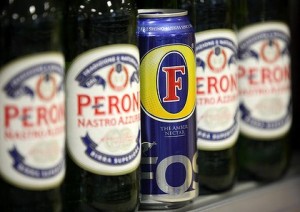Can you brew authenticity under license? A case of ‘imported’ beer.
December 10, 2012 Leave a comment
Ales, lagers, stouts, porters, pilsners, IPAs… If there is one thing Australian’s like its beer. Whether it’s for celebrating, commiserating, relaxation or concentration, a beer is never far away.
Although the market is dominated by a few stalwart brands (think VB, XXXX and Tooheys), their overall share of the market has been diminishing in recent years. Fueled in part by the easy accessibility and relative affordability of international brands, increasingly sophisticated Australian drinkers are branching out and expanding their sudsy palates.
If you have spent some time sampling various ‘premium’ international beers, your discerning eye may notice a seeming peculiarity – often your bottle of Heineken is not brewed at the eponymous factory in Holland, but at a decidedly less romantic, non-descript Lion Nathan brewery on NSW’s central coast.
In many cases, your premium international beer is made in Australia. Well known brands such as Peroni, Stella Artois, Kronenbourg and Carlsberg are brewed by Foster’s and Heineken and Beck’s are brewed by Lion Nathan. This is done for economic reasons, for their bottom line it makes more fiscal sense for these big, well-known international brands to outsource and franchise their production. After all, the majority of their value exists in their ‘brand’, rather than in the beer itself.
Is there a taste difference? Well the evidence it is inconclusive. Dedicated beer aficionados claim they can taste whether a Peroni Nastro Azzuro is the ‘real’ Italian version or a ‘fake’ Aussie knock off – often citing differences in water quality and ingredients. However, casual drinkers may be unable to tell, or simply blissfully unaware. In fact there is even the suggestion that some people may find the locally brewed versions tastier.
However, this is really not what’s at stake here for many consumers, particularly those with some knowledge of the international beer market. Many consumers are feeling duped. If they are paying premium prices, they want a premium product; they want the ‘real’ thing. It’s almost akin to thinking you are buying an authentic Rolex, but getting a dodgy knockoff.
This is reflected in the user reviews of various beers on Dan Murphy’s website (one of Australia’s largest alcohol retailers). Interestingly, they stock both the ‘fully imported’ and ‘brewed under license’ of a number of well-known, premium international brands. Invariably, the ‘authentic’ version scores much better than the ‘fake’ version, a phenomenon which is reflected in the various comments.
| Fully imported | Brewed under license | |
| Peroni | 4.5 | 2 |
| Becks | 4.75 | 2 |
| Heineken | 4.5 | 3 |
| Stella Artois | 4.3 | 1.8 |
| Grolsh | 4.3 | 2.7 |
| (scores out of 5) |
It would seem these brands can’t brew authenticity under license. In fact doesn’t matter if there is a functional taste difference – psychologists would tell us that if your brain thinks it is likely to taste inferior (because it is made locally and therefore less authentic), chances are your tongue will agree. Once the illusion of international sophistication is eroded, of the authenticity brand will be questioned every time a beer is in hand.
This rejection and scepticism of the ‘fake’ international brands is likely to increase, particularly as Aussie beer drinkers become increasingly sophisticated and questioning. And although it may not hurt these brands in the short run, it may over time see Australian consumers turning their back on these well-known international brands – particularly if online consumers become more vocal.
// Alec Schumann







